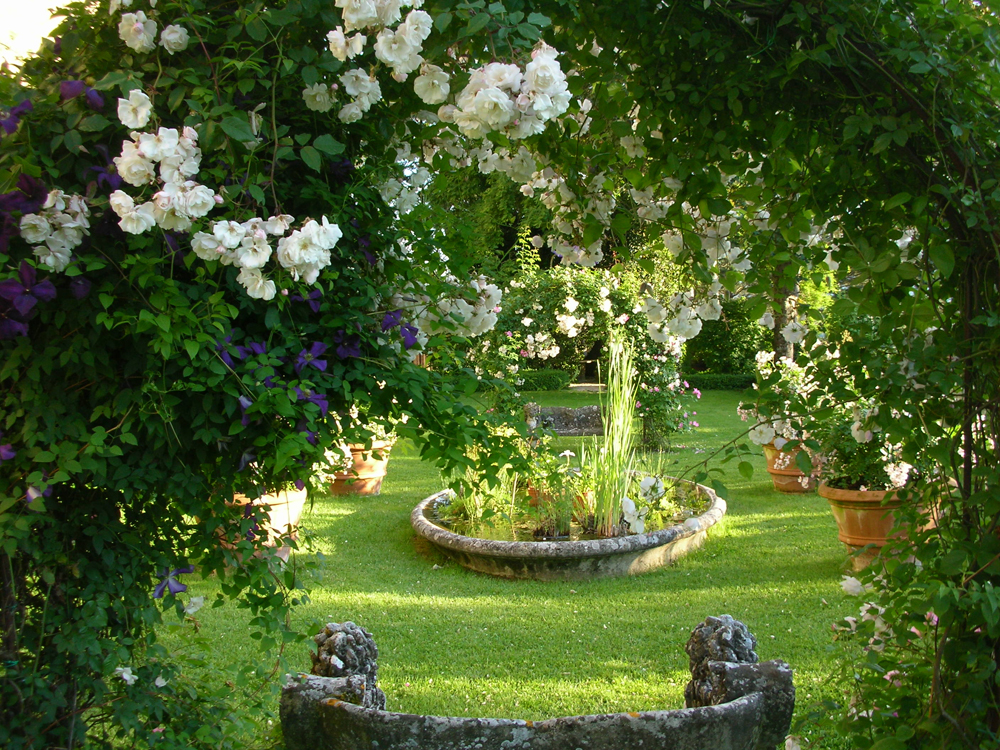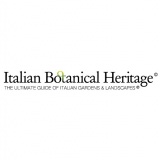
 Italian Botanical Heritage
Italian Botanical Heritage
Italian gardens and parks: Rocca d'Ajello fortress and garden, Camerino
- WTI Magazine #175 May 18, 2024
-

 Italian Botanical Heritage
Italian Botanical Heritage
Rocca D'Ajello is an ancient fortress that stands on a wooded hill, 10 km from Camerino and 30 from Macerata, in the middle of a typical bucolic landscape. For over three hundred years, between years 1200 and 1500, Rocca D'Ajello was owned by the Duke of Varano; then the Vatican acquired it, gave it to different families throughout the years, and finally sold it in the second half of the nineteenth century to the Vitalini family, which still owns it.
The structure is composed by two towers with battlement connected by a lead curtain, to protrude at the vertices of both sides, diagonally, each of one slipping two fronts. This structural integration has created a fortified complex trapezoidal, also used as a dwelling.
The current aspect of the construction is the outcome of a series of transformations resulting in particular from collapses caused by earthquakes, including that disastrous at the end of 1700.
At lower levels it can still be seen the old structure of the fortress; the cellar, a vast environment by barrel vault, shows the bottom layers of rock on which the building rests. Once upon a time it was the garrison’s stable: one whole side is occupied by a series of niches that served as feeders for horses. This was definitely the basement passage connecting the two towers.
Today the castle is restored and has large interior rooms, a large courtyard, a number of living rooms furnished and equipped kitchens.
The garden
The current owner, Elizabeth Vitalini Sacconi, cousin of Anna Peyron, is a great connoisseur of old roses: she’s the one who started the restoration of the garden, which is divided into a grassy area in front of the main facade and a more recent part occupying the old terraced orchard. The first, bounded by crenellated walls and lined with lime trees and maples, has an Italian system: consists of 6 large beds bordered by box hedges, around an oval tub; embellished with roses and clematis clothes arches and stone benches; in the flower beds grow perennials, spiree, bluebells, Delphinium spp. and Japanese anemones, old roses and newly introduced, re-bloom roses produced by David Austin, Meilland and Lens, in addition to wild species of violets, primroses, bulbous, wild orchids.
Climbing rose and pink banks ("Zephirine Drouhin", "Alberic Barbier", "Iceberg", "Paul's Himalayan Musk") cover the front of the fortress and the wall of the small adjoining church. Other luxuriant roses (including "Ferdy" and "Bingo") bloom in other corners of the garden, along with lavender, Teucrium fruticans and Erigeron karvinskianus).
The new garden was created in the old terraced orchard, long abandoned, where fruit trees were replanted and flowering apple trees introduced, together with many other climbing roses, including "Rambling Rector” and “Constance Spry” to form a small rose garden where in summer a multitude of zinnias blooms.
In another corner, near the church, a small garden of sunny dahlias was built.
Finally, in the farm attached to the Rock, a "garden of cut flowers" was created, with roses, delphiniums, dahlias, zinnias and many other annuals and perennials, berry shrubs and flowering and decorative leaf trees.